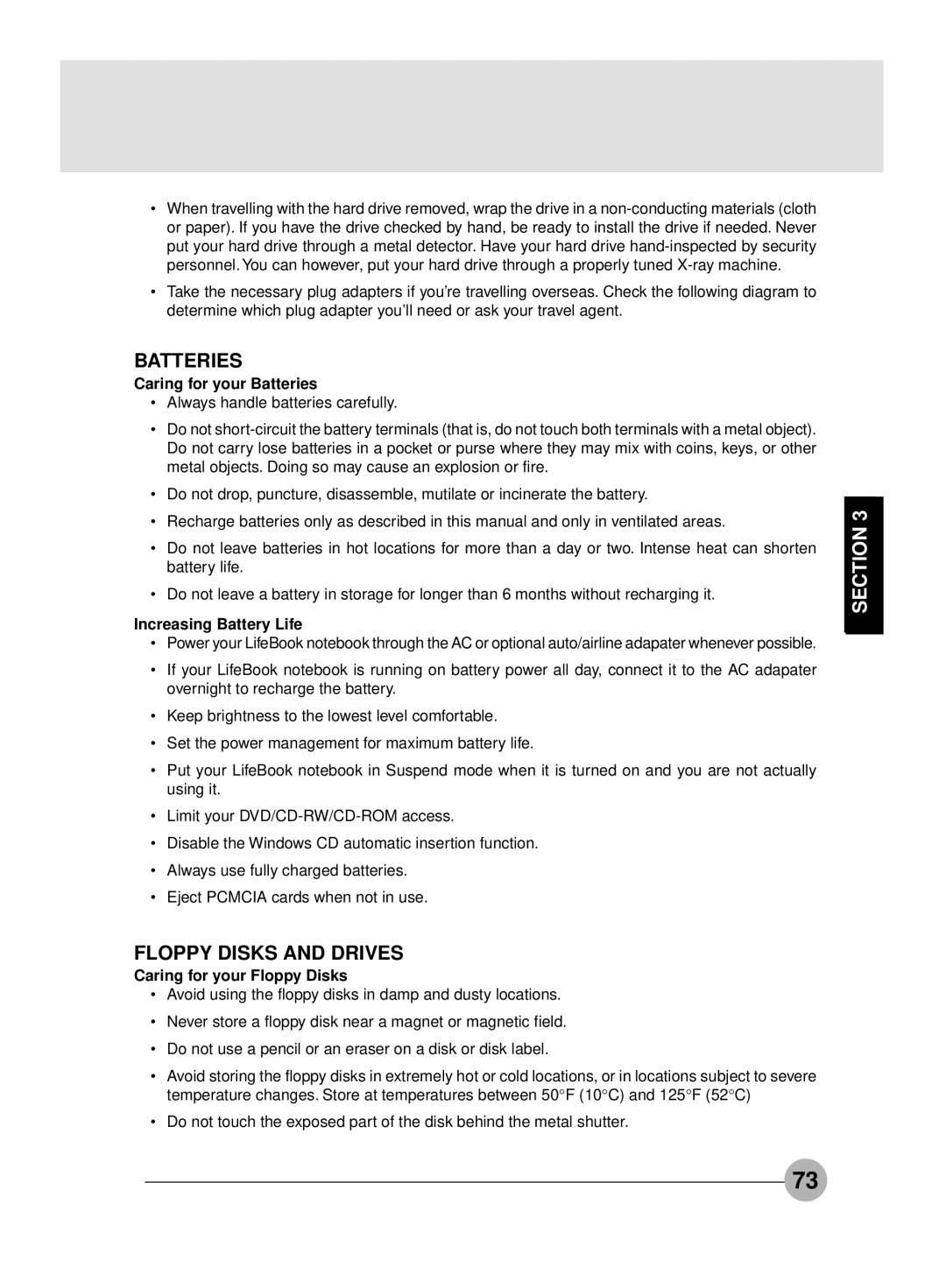
•When travelling with the hard drive removed, wrap the drive in a
personnel. You can however, put your hard drive through a properly tuned
•Take the necessary plug adapters if you’re travelling overseas. Check the following diagram to determine which plug adapter you’ll need or ask your travel agent.
BATTERIES
Caring for your Batteries
•Always handle batteries carefully.
•Do not
•Do not drop, puncture, disassemble, mutilate or incinerate the battery.
•Recharge batteries only as described in this manual and only in ventilated areas.
•Do not leave batteries in hot locations for more than a day or two. Intense heat can shorten battery life.
•Do not leave a battery in storage for longer than 6 months without recharging it.
Increasing Battery Life
•Power your LifeBook notebook through the AC or optional auto/airline adapater whenever possible.
•If your LifeBook notebook is running on battery power all day, connect it to the AC adapater overnight to recharge the battery.
•Keep brightness to the lowest level comfortable.
•Set the power management for maximum battery life.
•Put your LifeBook notebook in Suspend mode when it is turned on and you are not actually using it.
•Limit your
•Disable the Windows CD automatic insertion function.
•Always use fully charged batteries.
•Eject PCMCIA cards when not in use.
FLOPPY DISKS AND DRIVES
Caring for your Floppy Disks
•Avoid using the floppy disks in damp and dusty locations.
•Never store a floppy disk near a magnet or magnetic field.
•Do not use a pencil or an eraser on a disk or disk label.
•Avoid storing the floppy disks in extremely hot or cold locations, or in locations subject to severe temperature changes. Store at temperatures between 50°F (10°C) and 125°F (52°C)
•Do not touch the exposed part of the disk behind the metal shutter.
SECTION 3
73
